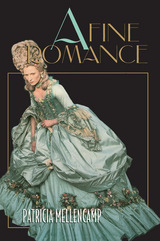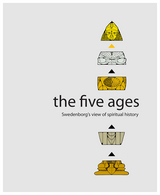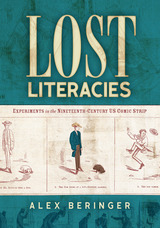2 books about Five Ages

A Fine Romance
Five Ages of Film Feminism
Patricia Mellencamp
Temple University Press, 1996
"...Mellencamp...has undertaken to address the issues, and that she has done so with great thoroughness, soul searching, wit, and intelligence, will surely position this book as a must-read for film theorists and many other feminists and feminist-influenced scholars and critics."
--Elayne Rapping
"Feminist film theory will soon be a quarter of a century old. It has known the euphoria of the 1970s, experienced the contradictions of the 1980s, and glimpsed the reversals and political gains, which include women of color, of the 1990s." But, Patricia Mellencamp asks, what is the next move?
In this challenging look at twenty years of feminist film theory, Mellencamp elaborates on its rich history, drawing on her personal academic life, and offering inventive readings of a remarkable variety of films: recent Hollywood releases like Forest Gump, Pulp Fiction, Thelma and Louise, Basic Instinct, and Silence of the Lambs, and features and independent films made by women, such as The Piano, Angie, Orlando, Bedevil, Daughters of the Dust, Privilege, and Forbidden Love.
With a clever sense of irony and wit, Mellencamp poses a question from which her analysis takes off: What did Rapunzel, Cinderella and Snow White forget to tell Thelma and Louise? According to Mellencamp, they forgot what comes after "the end," after the wedding to the prince. So many women's stories, often by choice, stop after the prince whisks the princess away to live happily ever after. This book asks, what does "happily" mean for women? And what does "ever after" cost women?
This creative call to shift film feminism's infamous "gaze" from sex and bodies to money and work ascertains where film feminism has been and what it needs to progress. Rather than recycling and regaining the same ground, Mellencamp urges film feminism to explore and claim new territory.
Reviews
"Bold, brilliant, radiantly funny and just sizzling with intelligence, A Fine Romance rewrites film history as an action adventure for women. Patricia Mellencamp is one of feminism's most audaciously creative thinkers."
--Meaghan Morris, author of The Pirate's Fiancée: Feminism, Reading, Postmodernism
"This is a book of mega-energetic proportions by a brilliant cultural critic who engages the disabling fiction of romance through a double reading--of films by women from all over the globe and of feminist film theory over the past two decades. A fine romance glitters with Mellencamp's legendary wit. It is also deeply serious and wide-ranging, addressing questions of work and money, age and friendship, obsession and addiction, history and the emotions."
--Kathleen Woodward, Director, Center for Twentieth Century Studies, University of Wisconsin
Contents
Acknowledgments
To Begin with...
1. What Cinderella and Snow White Forgot to Tell Thelma and Louise
Age One: Intellectual Feminism
2. "A Fine Romance, with No Kisses": Discourse, Not Intercourse
3. "Sexual Economics": Gold Diggers of 1933
4. Romantic Delusions
5. Fatal Attractions and Obsessions
Age Two: Irascible Feminism
6. Protofeminists
7. Cryptofeminists
Age Three: Experimental Feminism
8. What I Really Want to Do Is Direct
Age Four: Empirical Feminism
9. Archival and Avant-Garde
10. Haunted History
Age Five: Economical Feminism
11. What Virginia Wolf Did Tell Sally Potter
Notes
Index
About the Author(s):
Patricia Mellencamp is Professor of Film and Cultural Theory, Department of Art History, the University of Wisconsin at Milwaukee. She has published several books, including High Anxiety: Catastrophe, Scandal, Age and Indiscretions: Avant-garde Film, Video, and Feminism.
[more]

The Five Ages
Swedenborg's View of Spiritual History
Emanuel Swedenborg
Swedenborg Foundation Publishers, 2009
The Five Ages: Swedenborg’s View of Spiritual History presents a compelling spiritual and psychological history of human evolution. It is a compilation of extracts from the works of the eighteenth-century Swedish philosopher and mystic Emanuel Swedenborg on the subject of the “world ages,” a concept that is found in many different cultures and mythologies. The Greeks and Romans called these epochs the Golden, Silver, Bronze and Iron Ages; Hindu mythology talks of the four yugas; Islam, meanwhile, refers to a pattern of the six major prophets. Similar timeframes appear in Norse, Persian, and Aztec mythology, but nowhere is this theme treated with such detail as in the works of Swedenborg. He divides human history into five biblically based ages: that of Adam, Noah, Moses, Jesus Christ, and a fifth one that is just unfolding, one predicted in the book of Revelation.
The Five Ages brings together passages from over twenty different works by Swedenborg, neatly linking them with an engaging and informative commentary in which P. L. Johnson compares and contrasts Swedenborg’s ideas with those from other cultures, placing them in the context of historical and archaeological knowledge gathered since Swedenborg’s time.
The book is illustrated throughout, featuring thirty helpful and charming black-and-white line drawings. It also contains a bibliography, a subject index, an index of quotations from the works of Swedenborg, and an appendix on “World Age Patterns.”
The Five Ages brings together passages from over twenty different works by Swedenborg, neatly linking them with an engaging and informative commentary in which P. L. Johnson compares and contrasts Swedenborg’s ideas with those from other cultures, placing them in the context of historical and archaeological knowledge gathered since Swedenborg’s time.
The book is illustrated throughout, featuring thirty helpful and charming black-and-white line drawings. It also contains a bibliography, a subject index, an index of quotations from the works of Swedenborg, and an appendix on “World Age Patterns.”
[more]
READERS
Browse our collection.
PUBLISHERS
See BiblioVault's publisher services.
STUDENT SERVICES
Files for college accessibility offices.
UChicago Accessibility Resources
home | accessibility | search | about | contact us
BiblioVault ® 2001 - 2024
The University of Chicago Press









